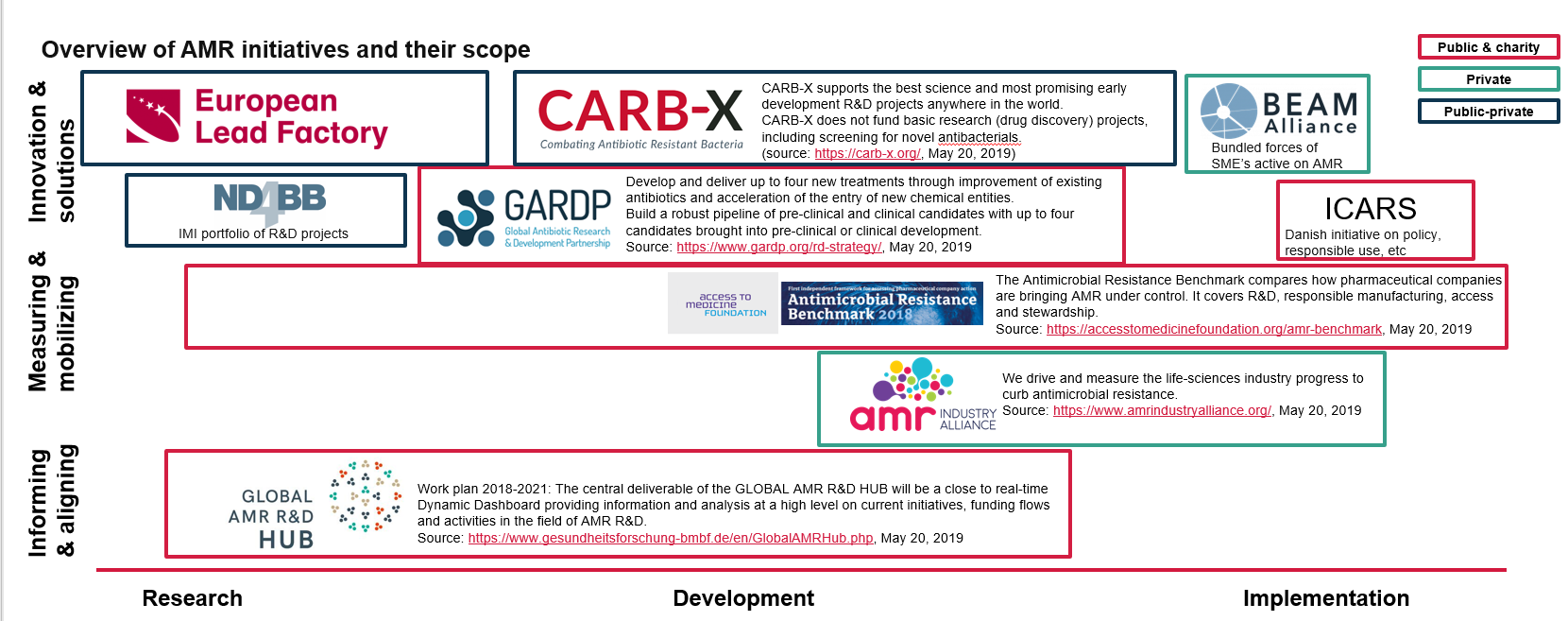Developing a new antibiotic is time consuming, costly and, most of all, not guaranteed to succeed. As such, it is a risky endeavour for pharmaceutical companies to partake in. Furthermore, with AMR on the rise, newly developed antibiotics should be preserved except for when absolutely needed. Because of these constraints, the market for them is shrinking. All of this makes the development of new antibiotics unattractive for the private sector.
A number of companies are producing antibiotics (IFPMA, 2015) (Access to Medicine Foundation, 2018), but many of these are only variations on existing antibiotics. Such ventures are a safer bet for companies to invest in because less research is needed and approvals are faster due to similarities to existing approved drugs. However, these slightly modified antibiotics only overcome resistance for a short period of time.
 What should I do with the unused/expired antibiotics that I have at home?
What should I do with the unused/expired antibiotics that I have at home?

 Report
Report

